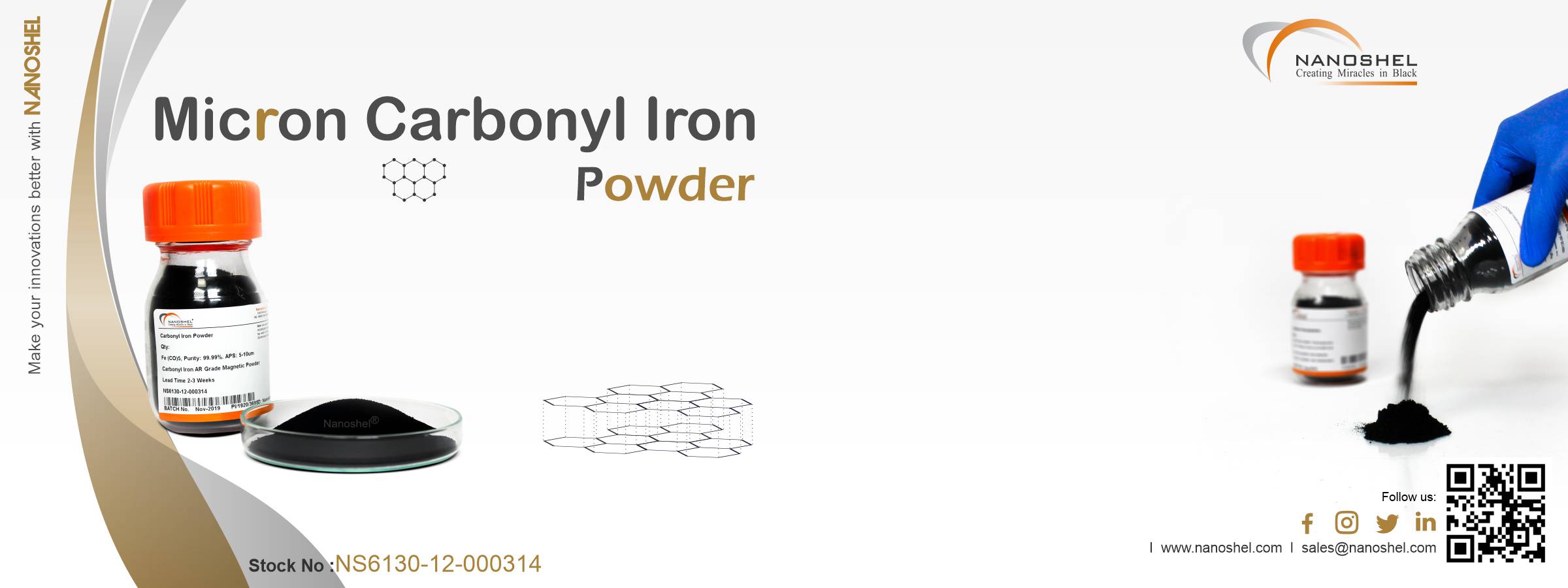Micron Carbonyl Iron Powder
Purity: 99.99%, APS: 4µm
Micron Carbonyl Iron Powder
| Product | Carbonyl Iron Powder | |
| Stock No | NS6130-12-000314 | |
| CAS | 7439-89-6 | Confirm |
| Purity | 99.99% | Confirm |
| APS | 4µm | Confirm |
| Molecular Formula | Fe | Confirm |
| Molecular Weight | 55.85g/mol | Confirm |
| Form | Powder | Confirm |
| Color | Gray | Confirm |
| Density | 7.86g/cm3 | Confirm |
| Melting Point | 1535°C | Confirm |
| Boiling Point | 2750°C | Confirm |
| Thermal Expansion | 11.8 µm•m-1•K-1 | Confirm |
| Thermal Conductivity | 0.804 W/cm/K (298.2 K) | Confirm |
| Vickers Hardness | 608 MPa | Confirm |
| Poisson's Ratio | 0.29 | Confirm |
| Electrical Resistivity | 9.71 µΩ•cm (20°C) | Confirm |
| Electronegativity | 1.8 Paulings | Confirm |
| Young's Modulus | 211 GPa | Confirm |
| Specific Heat | 0.106 Cal/g/K @ 25°C | Confirm |
| Heat of Fusion | 3.56 Cal/gm mol | Confirm |
| Solubility | Insoluble in water | Confirm |
| Quality Control | Each Lot of was tested successfully | |
| Main Inspect Verifier | Manager QC | |
Typical Chemical Analysis
| Assay | 99.99% |
Expert Reviews
Micron Carbonyl Iron Powder

Contact Us
From us, you can easily purchase Silver Nano particles as a new generation of Antimicrobials (Ag, Purity: 99.9%, APS: 50–80 nm, Metal basis) at great prices. Place an online order and we will dispatch your order through DHL, FedEx, UPS. You can also request a quote by mailing us at sales@nanoshel.com. We invite you to contact us for further information about our company and our capabilities. At Nanoshel, we look forward to your suggestions and feedback.
Email Us:
sales@nanoshel.comcmg@nanoshel.com
🔆
Follow Us:
Direct Call Us:
USA – Sales/Research
+1 646 470 4911
+1 646 470 4911
UK – Sales/Research
+44 1782 454 144
+44 1782 454 144
Ireland – Sales/Research
+354 71 985 3714
+354 71 985 3714
India – Sales/Research
+91-9779550077
+91-9779238252
+91-9779550077
+91-9779238252
Note:
*Exchanges of materials/products are not permitted. Nanoshel does not offer refunds.
*US Dollar Cheques Not Accepted, Only Bank TT/Credit Cards Accepted
*Exchanges of materials/products are not permitted. Nanoshel does not offer refunds.
*US Dollar Cheques Not Accepted, Only Bank TT/Credit Cards Accepted
